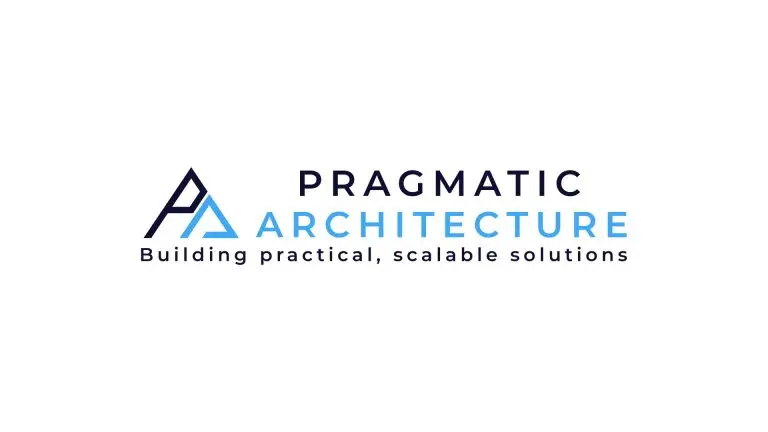In the traditional corporate world, enterprise architecture (EA) plays a critical role in ensuring that IT and business strategies align. The role of an Enterprise Architect is to create a blueprint that guides the organization’s technology investments, ensuring efficient operations, scalability, and compliance. Yet, in many of the world’s most successful technology companies—Google, Amazon, Facebook, and others—Enterprise Architects are notably absent. Why is this the case, and how do these companies manage governance without a dedicated EA function? How does this relate to the approach of Pragmatic Architecture?
Let’s explore these questions by looking at how governance works in Big Tech and drawing a comparison to Pragmatic Architecture.
The Absence of Enterprise Architects in Big Tech
In large, established enterprises, EA is crucial for managing complex systems, ensuring integration across legacy technologies, and maintaining regulatory compliance. These businesses rely on extensive, often slow-moving processes to manage technology governance. However, Big Tech operates in a fundamentally different environment. Their systems are designed to be flexible, autonomous, and scalable from the ground up, which minimizes the need for a central figure like an Enterprise Architect.
Here are some key reasons why Big Tech doesn’t need traditional enterprise architects:
1. Agile, Autonomous Teams: In Big Tech, teams are typically structured to be small, cross-functional, and agile. Each team is responsible for delivering a specific service or part of a larger product, with full ownership of its codebase, infrastructure, and performance. This reduces the need for a centralized architecture function to dictate technical decisions.
2. Decentralized Decision-Making: Governance in Big Tech is often decentralized. Rather than relying on top-down control, decision-making is pushed down to the teams closest to the technology and the users. This allows teams to move fast and innovate, without needing approval from a central architectural authority.
3. Microservices and API-First Design: Big Tech companies embrace architectural patterns like microservices and APIs to decouple systems and allow teams to work independently. This approach eliminates many of the integration challenges that enterprise architects in traditional companies face. Each team builds and maintains services that communicate over APIs, reducing the complexity of system dependencies.
4. Cultural Emphasis on Engineering Excellence: In Big Tech, there’s a strong emphasis on hiring top engineering talent and creating a culture where architects emerge organically within teams. Senior engineers and technical leaders often perform architectural roles without the need for a formal EA position.
5. Cloud-Native Infrastructure: Many Big Tech companies were early adopters of cloud-native technologies, which inherently provide scalability, flexibility, and built-in governance tools. Platforms like AWS, GCP, and Azure offer services for monitoring, security, and compliance, reducing the need for manual governance processes that traditional enterprise architects typically manage.
Governance in Big Tech: How Do They Do It?
While Big Tech companies may not have traditional Enterprise Architects, they are far from ungoverned. Governance is embedded in the culture, processes, and tooling:
• Automated Governance Tools: Big Tech companies rely heavily on automated tools to manage governance at scale. For example, infrastructure as code, continuous integration/continuous deployment (CI/CD), and automated testing are standard practices that enforce governance rules without slowing down development.
• Internal Platforms: Many of these companies build internal developer platforms that enforce standards across teams. By using shared services for things like security, data access, and compliance, governance is standardized without central oversight.
• Strong Technical Leadership: In place of traditional architects, Big Tech companies rely on senior engineers and technical leadership roles such as Principal Engineers or Distinguished Engineers. These leaders provide architectural guidance within their teams while ensuring alignment with broader company objectives.
Pragmatic Architecture: Aligning With the Big Tech Approach
Pragmatic Architecture shares many principles with how Big Tech organizes governance. At its core, Pragmatic Architecture focuses on outcomes over processes, autonomy over centralization, and efficiency over bureaucracy. Here’s how it compares:
1. Outcome-Oriented Focus: Like Big Tech, Pragmatic Architecture is driven by delivering value and measurable outcomes, rather than following rigid, predefined processes. This aligns with the agile, fast-moving nature of modern tech companies, where the focus is on shipping valuable features and services to customers.
2. Decentralized, Autonomous Teams: Pragmatic Architecture advocates for empowering teams with the autonomy to make decisions and own their solutions. This mirrors Big Tech’s decentralized governance, where teams are given the freedom to innovate and the responsibility to govern themselves within established guardrails.
3. Lean Governance: In Big Tech, governance is built into the tools and culture, rather than enforced through a top-heavy bureaucracy. Pragmatic Architecture takes a similar approach, encouraging lean governance practices that support flexibility and speed, rather than slowing teams down with unnecessary oversight.
4. Scalable and Flexible Systems: Like the microservices and API-first architectures that dominate Big Tech, Pragmatic Architecture embraces modularity, scalability, and flexibility in system design. This ensures that architectures can evolve with the business, without requiring extensive rework or central planning.
5. Architects as Enablers: While Big Tech doesn’t have formal Enterprise Architects, they do have technical leaders who guide architectural decisions. Similarly, Pragmatic Architecture envisions architects not as gatekeepers, but as enablers who provide guidance and context, allowing teams to make informed decisions while staying aligned with the overall business strategy.
Conclusion: A Shift Toward Pragmatic Architecture
The absence of Enterprise Architects in Big Tech isn’t an oversight—it’s a reflection of how governance has evolved in fast-paced, technology-driven environments. By decentralizing decision-making, automating governance, and empowering teams, Big Tech companies have built organizations that can scale quickly without sacrificing innovation or agility.
Pragmatic Architecture offers a framework that mirrors these principles, making it well-suited for organizations looking to adopt a more flexible, outcome-oriented approach to architecture. Whether you’re a tech startup or an established enterprise looking to modernize, embracing the principles of Pragmatic Architecture can help you streamline governance, foster innovation, and achieve scalable success.



